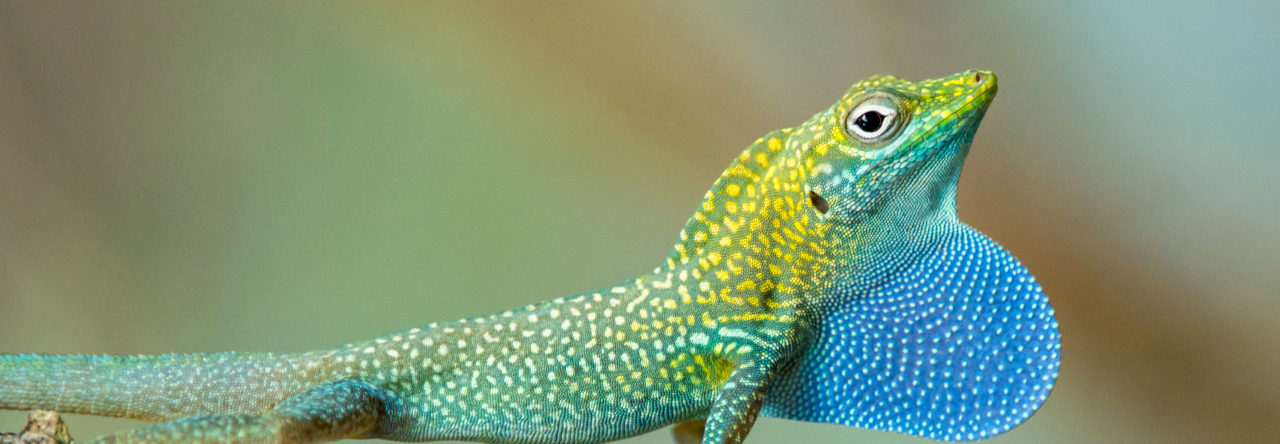During our Anolis distichus work in the DR last summer, we found one male who had a portion of his dewlap that was completely transparent!
Of course, there was a hole in his dewlap. (Sorry Manuel).
It’s fairly common to find male anoles with damaged dewlaps. Sometimes there’s a hole punched through like the individual pictured here. (Did he snag it on a thorn? Was he pecked at by a bird?) Other times, the hyoid process is broken such that the dewlap doesn’t fully extend, if it extends at all. Yet these males often successfully hold territories that include females.
A previous post on AA asked, “What’s all the fuss about dewlaps?” Link to that post to read about research that experimentally reduced or disabled the dewlap to study the consequences. These studies did not find an appreciable effect of a disabled dewlap on the outcome of male-male battles (staged in the lab) or on copulation success (measured in the field after dewlap manipulation). These results suggest, counterintuitively, that dewlaps may not play a large role in reproductive success.





























































